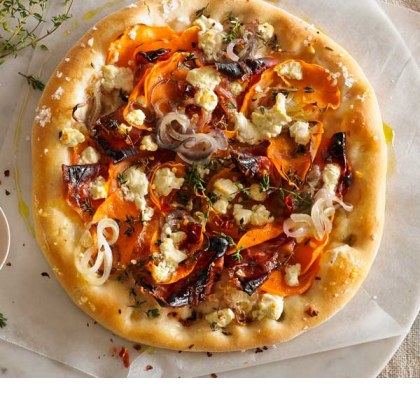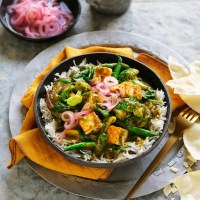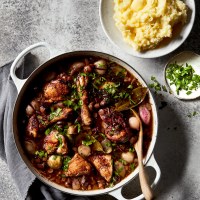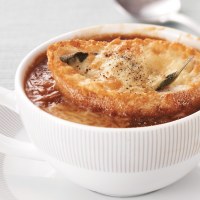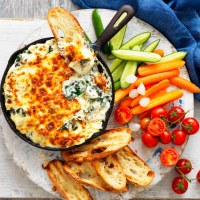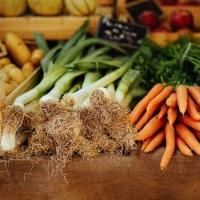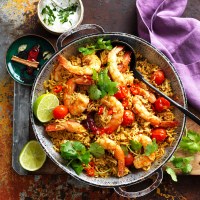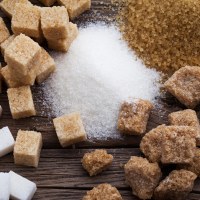The difference between red vs brown vs white onions
Onions are an essential ingredient in cuisines all over the world. They add amazing depth of flavour wherever they go, so it's no coincidence that so many recipes begin with a splash of oil and onion in a hot pan. Their sharp, bright flavour when raw or pickled is also loved in salads and sandwiches. Or they can be cooked until they're sweet and caramelised with a good sausage sizzle. There are so many options, and many types of onions to use. Discover popular onions in Australia and how they're best used.
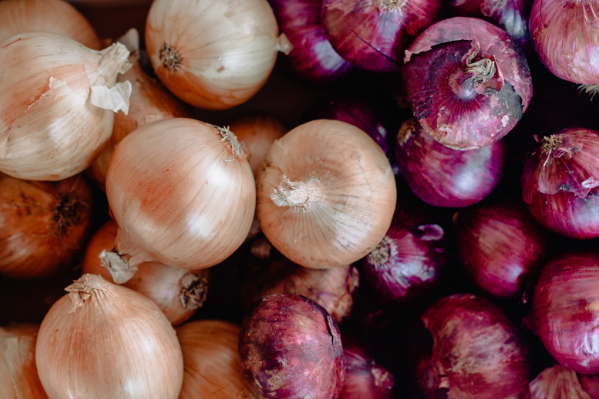
Brown onions on the left, red onions on the right
Brown onions
This is the most common cooking onion available in Australia. With its crisp white flesh and papery brown skin, the brown onion’s distinct, well-rounded onion flavour makes it perfect for all cooking uses.
Usually too strong to be eaten raw, the brown onion should be cooked with medium to medium-high heat to bring out its sweetness.
Recipes using brown onions:
- French Onion Soup with Parmesan Sage Croutons
- Butter Chicken Roti Bowls
- Slow Cooked Lamb Ragu with Pappardelle
- One-pan Creamy Chicken Pasta
Red onion
Often incorrectly called Spanish onions, red onions have a distinctive vibrant crimson skin and white and red tinged flesh. They're usually quite large and 'meaty'.
Red onions have a much higher sugar content and are therefore sweeter than brown onions. Most often used raw in salads and salsas for their colour and mild flavour. They are also perfect for pickling, lending a pink colour to the pickle. They're also great for caramelising.
Recipes using red onions:
- Sweet and Sour Pork
- 30 Minute Pizza Pasta Bake
- Healthy Lentil and Feta Frittata
- Saag Vegetable Curry with Paneer Cheese
White onions
Have a distinct onion flavour that’s a bit milder and sweeter than brown onions making them a popular choice for eating raw in salads. White onions have a thinner skin and ‘meaty’ flesh like red onions. Great for cooking too.
Recipes with white onions:
Pickling onions
Also called pearl onions. These small onions are around the size of a 20-cent coin with a flavour similar to brown onions. As their name suggests, their size makes them favoured for pickling. Pearl onions are also great in casseroles and roasts, just peel and add in whole. Don't confuse pearl onions with shallots, shallots are much sweeter and milder in flavour.
Eschalots, shallots or French shallots
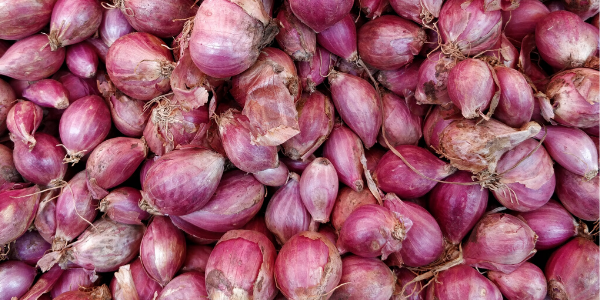
These small, oval-shaped onions grow in clusters similar to garlic. With papery golden brown or purple skin, they are sweeter and milder than all the other onion varieties. They're used mainly in French and Asian cooking. If you can't find eschalots, you can substitute red or white onions.
Recipes with shallots:
Spring onions
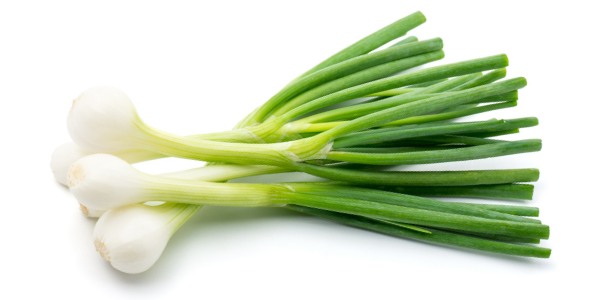
Like green onions, spring onions have an edible green leafy stalk and bright flavour that is milder than regular onions. Spring onions have a small white immature bulb near the root. This makes them perfect for eating raw in salads or cooked in casseroles, soups and stir-fries.
Discover more recipes with onions below. Now you know all about these dry onions, do you know the difference between green onions, shallots and scallions? If you're not sure, click here to find out.
GET THE RECIPE: Butter Chicken Roti Bowls
These fun roti bowls are a different way to serve family favourite butter chicken.
GET THE RECIPE: Nasi Goreng Tray Bake
Brown onions add amazing depth of flavour to this easy baked rice dish.
GET THE RECIPE: Sweet and Sour Pork
Slices of sweet red onion are a delicious part of this sweet and sour stir fry. Their natural sweetness means they don't have to be cooked long, so they stay crunchy and fresh.

